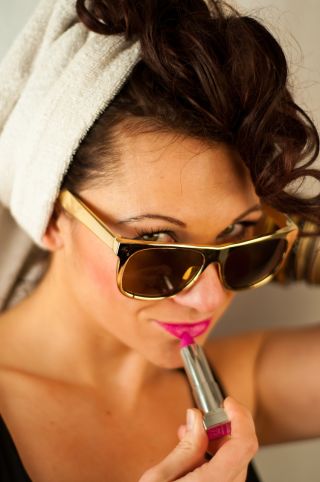Beauty
What Does a Woman's Makeup Actually Signal?
Exploring the link between cosmetics and courtship.
Posted July 12, 2024 Reviewed by Davia Sills
Key points
- Observers find women more attractive in makeup—the more makeup, the more attractive.
- Makeup has been linked with perceived romantic interest in men for short-term dating.
- In reality, makeup wearing is an unreliable cue of romantic interest or promiscuity.

One of the most popular methods of enhancing attractiveness is through makeup. From Hollywood glamour to girls’ night out, from red lipstick to false eyelashes, cosmetic adornment adds drama and style, both dramatic and subtle. But does it signal interest or availability? According to research, the answer depends on your audience.
Cosmetic Signaling: Does Makeup Mean You Are “On the Make”?
Carlota Batres et al. (2018) investigated perceptions of women wearing makeup.[i] They found, consistent with prior research, that women were viewed as more attractive when wearing makeup than when not wearing makeup and that wearing more makeup made women more attractive. But Batres et al. sought to go further, extending prior research which found that women wearing makeup were also rated as less modest, more promiscuous, more interested in men, and more likely to have an extramarital affair.
Specifically, they investigated the impact of makeup as a potential sign of sociosexuality—defined as “a willingness to engage in uncommitted sexual relationships.” Their results found that among both men and women raters, photographs of women wearing makeup were perceived as conveying more unrestricted sociosexuality than women without makeup. Their research sought to explain these results.
Makeup and Attraction
After recognizing the well-established link between makeup and attractiveness, Batres et al. cite one study (Jacob et al., 2009) that found that waitresses received significantly higher tips from male patrons when wearing makeup. A subsequent study (Guéguen and Jacob, 2011) found that makeup-tipping behavior was mediated by the perceived attractiveness of the waitress—suggesting that higher tips were due to makeup making them more attractive.
In a field study investigating courtship behaviors, Batres et al. note that Guéguen (2008) found that men were more likely to solicit women at a bar who were wearing makeup more often and quicker as opposed to women who were not wearing makeup. Guéguen proposed that wearing makeup may be linked with courtship behavior, both because it enhances attractiveness and because it may signal availability. But is that true?
Makeup and Sociosexuality: An Unreliable Alliance
In the current study, Batres et al., using a large set of photographs, found that faces wearing makeup were perceived as having more unrestricted sociosexuality than the same faces without makeup. They also found that more makeup matters. Women with more makeup were perceived as having a higher degree of unrestricted sociosexuality. However, when the women in the photographs were polled, self-reported sociosexuality was not associated with makeup-wearing habits, money spent on cosmetics, or observer ratings of sociosexuality when attractiveness was controlled. Batres et al. concluded that although observers use makeup as an indication of sociosexuality, it is an invalid cue.
Apparently, makeup-wearing does not predict sexual promiscuity, values, or willingness to engage in casual relationships, indicating the value of relying on more wholesome cues and clues. Respect, rapport, chemistry, and compatibility remain the most powerful predictors of relational success, both initially and over the long term.
Facebook image: Stock Rocket/Shutterstock
References
[i] Batres, Carlota, Richard Russell, Jeffry A. Simpson, Lorne Campbell, Alison M. Hansen, and Lee Cronk. 2018. “Evidence That Makeup Is a False Signal of Sociosexuality.” Personality and Individual Differences 122 (February): 148–54. doi:10.1016/j.paid.2017.10.023.


